The Sri Lankan flag, the Lion Flag, encapsulates the nation’s dynamic essence and historical depth. It represents the country’s resilience and collective spirit, weaving a rich narrative that transcends its visual elements as a gateway to understanding Sri Lanka’s past and aspirations.
Flag of Sri Lanka
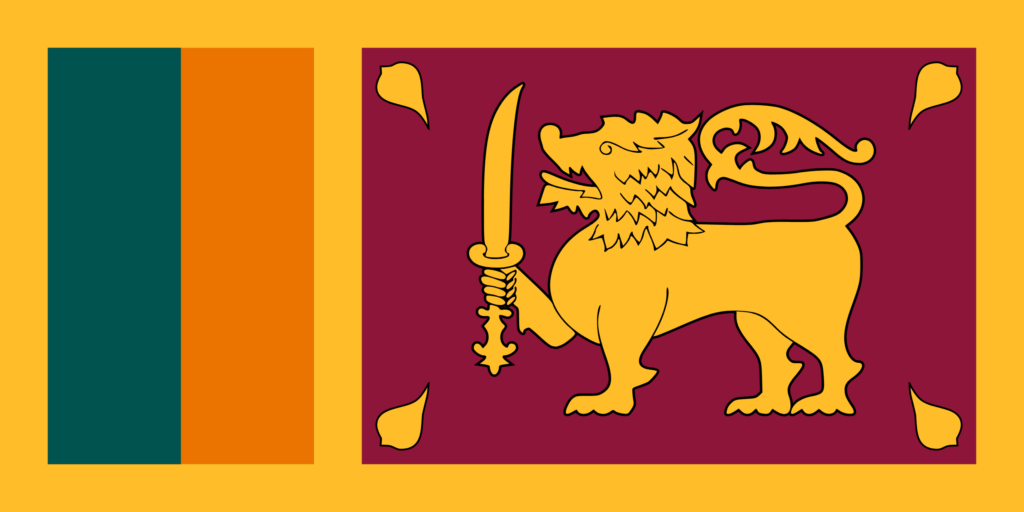
The Sri Lankan flag embodies the country’s heritage and values, featuring a golden lion in a maroon field with a yellow border cornered by green and saffron panels. The lion represents bravery, while the maroon background signifies the majority Sinhalese ethnicity.
The green and saffron bands highlight the Muslim and Tamil communities, promoting a message of harmony. This flag is globally recognized as a symbol of unity in diversity, reflecting Sri Lanka’s commitment to peace and inclusivity amidst its rich cultural mosaic.
Flag of Sri Lanka: Color Palette
Sri Lanka Flag Map

Sri Lankan Flag Emoji: 🇱🇰
The Sri Lankan flag’s color scheme, meticulously selected, mirrors the island’s rich diversity and strategic location in the Indian Ocean. The maroon, gold, green, and saffron blend reflects this tropical nation’s cultural and historical depth and natural beauty.
Meaning of Each Color
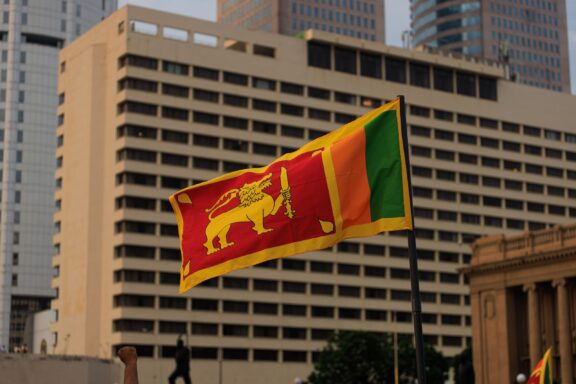
Green
The green stripe on the Sri Lankan flag symbolizes the Muslim faith, representing the country’s Moor (Muslim) ethnicity. This choice of color highlights Sri Lanka’s acknowledgment and respect for its Muslim community’s cultural and religious ancestry.
Green, often associated with Islam, reflects peace, nature, and life principles, underlining the country’s commitment to religious pluralism and unity among its diverse populations.
Maroon
Maroon, the flag’s dominant background color, represents the Sinhalese majority. This deep, earthy hue resonates with the nation’s historical strength and valor, symbolizing the courage and vitality of the Sinhalese people.
The choice of maroon connects the flag to the land itself, evoking a sense of belonging and pride among the Sinhalese and anchoring the national symbol in the country’s rich legacy and resilient spirit.
Gold (Yellow)
The gold border and bo leaves framing the Sri Lankan flag embody unity among the country’s diverse ethnic groups. Gold, a color associated with wealth, prosperity, and enlightenment, mirrors the nation’s peace and communal harmony aspirations.
The bo leaves represent the Buddhist virtues of loving-kindness, compassion, sympathetic joy, and equanimity, reinforcing the flag’s role as a beacon of the country’s moral and spiritual values.
Orange
The orange stripe, positioned alongside the green, pays homage to the Tamil ethnicity, including the Hill Country Tamils. Orange is deeply rooted in Hinduism and is symbolic of sacrifice and courage, reflecting the vibrant culture and traditions of the Tamil population in Sri Lanka.
The inclusion of orange in the flag underscores the importance of the Tamil community within the national narrative, celebrating its contributions and acknowledging its unique cultural identity.
Sri Lankan Coat of Arms
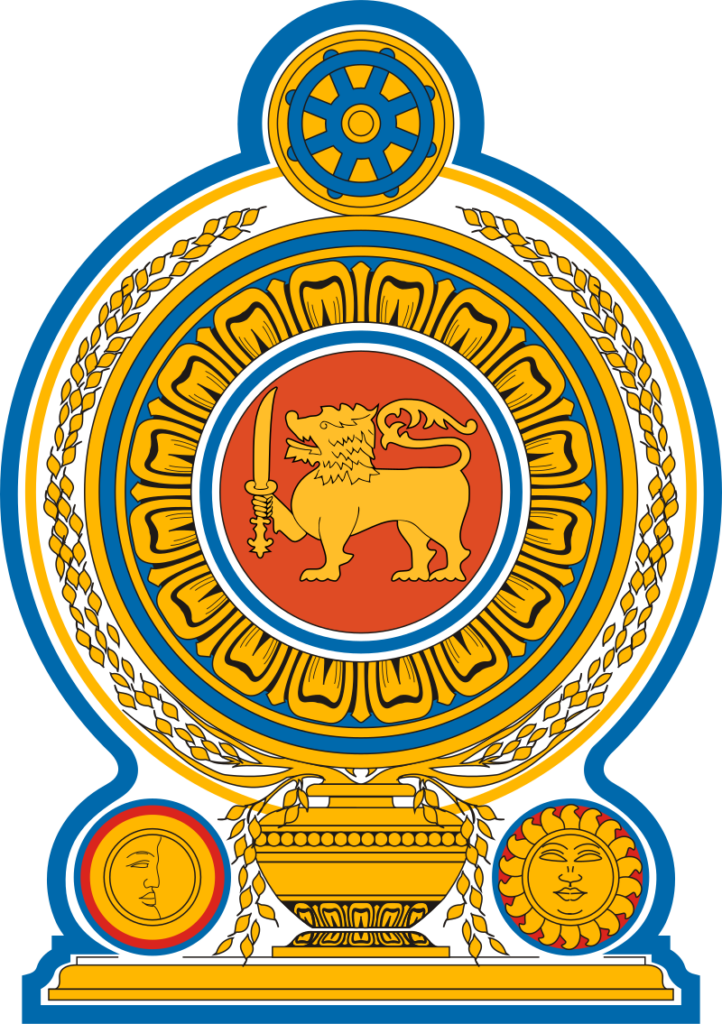
Sri Lanka’s Coat of Arms visually represents the nation’s sovereignty, culture, and natural genealogy, weaving together symbols that reflect its rich history and diversity. The emblem comprises:
- Lion Holding a Sword: At the center, it symbolizes bravery and strength, reminiscent of the national flag’s lion, and highlights the significance of the Sinhalese ethnicity.
- Lotus Petals: Surrounding the lion, representing purity and the nation’s devotion to Buddhism.
- Shield Divisions: Featuring four quadrants, each symbolizing key aspects of Sri Lankan life:
- A rice sheaf, denoting agriculture and prosperity.
- A reservoir and an overflowing vase signify the country’s rich water resources and ancient irrigation achievements.
- A cogwheel representing industrial development.
- The sun symbolizes energy and the vibrancy of life.
- Supporters: A lion and another figure, illustrating the unity among Sri Lanka’s diverse ethnic groups, with the lion representing the Sinhalese and the other figure the Tamil community.
- Motto: “Sri Lanka Matha” (Mother Sri Lanka) inscribed below, expressing reverence and loyalty to the nation.
This Coat of Arms not only honors Sri Lanka’s historical and cultural legacy but also its commitment to unity and the inclusive identity of its people.
Historical Evolution and the Meaning Behind Changes
The flag of Sri Lanka has undergone significant transformations throughout its history, reflecting the island’s complex cultural and political shifts.
The earliest flags in Sri Lanka were linked to the various kingdoms that ruled the island. These flags often featured symbols like lions, the sun, and the moon, representing power and prosperity. The lion, in particular, has been a consistent symbol of Sinhalese ethnicity and bravery.
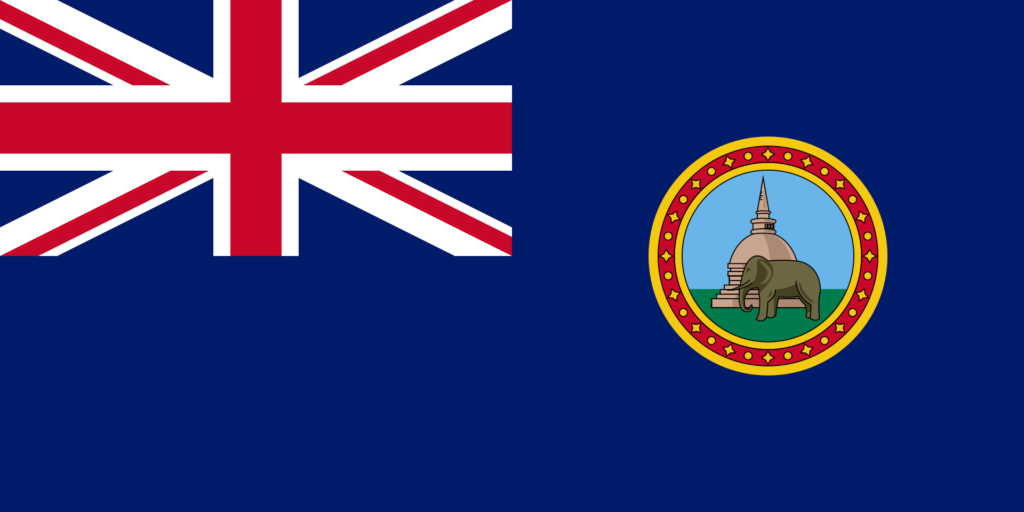
During the colonial period, specifically under British rule, starting in 1815, Sri Lanka’s flag saw significant changes. The Union Jack was introduced, symbolizing the island’s status as a British colony. However, elements of traditional Sinhalese symbols were maintained, reflecting a blend of colonial influence and indigenous roots.
The move towards independence saw a resurgence in nationalistic symbols, leading to the re-adoption of the lion flag, reminiscent of the Sinhalese kingdoms. In 1948, when Ceylon (as Sri Lanka was then known) gained independence, a new flag was adopted to represent the island’s ethnic diversity.
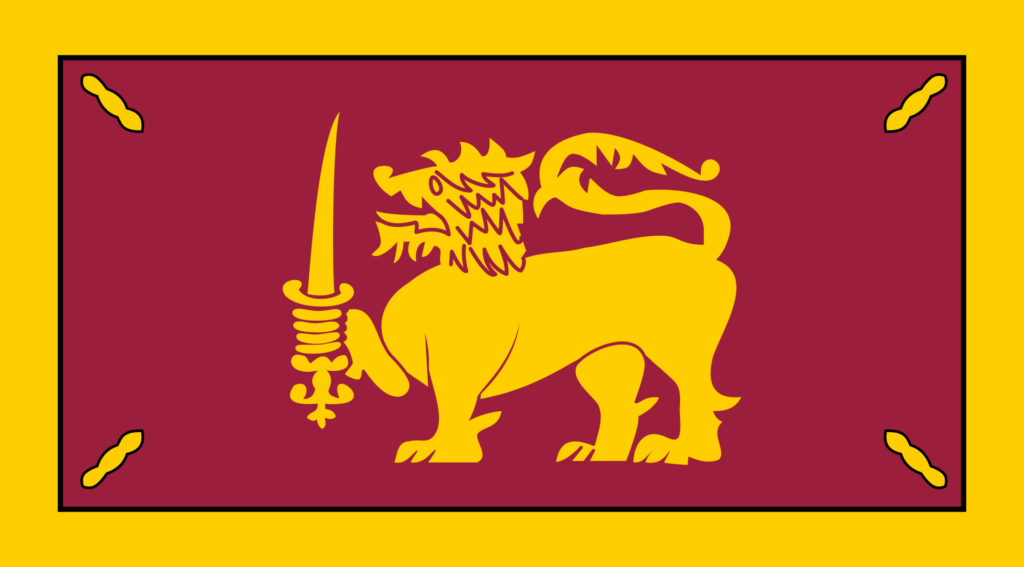
The most significant redesign came in 1972 when Sri Lanka became a republic, shedding its colonial name, Ceylon. This redesign introduced the current flag format, incorporating the lion to represent the Sinhalese majority and including green and orange stripes to symbolize the Muslim and Tamil minorities, respectively.
The evolution of Sri Lanka’s flag is a testament to the nation’s ongoing efforts to balance respect for its rich heritage with the need to acknowledge and celebrate its diverse population.
Overall Symbolic Meaning of the Flag
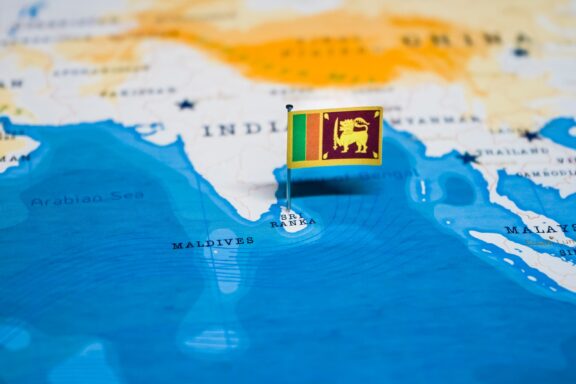
The Sri Lankan flag symbolizes the nation’s prosperous past, culture, multiplicity, and aspirations. Its distinct elements convey a story of stability, respect for diverse traditions, and a commitment to national harmony.
Each flag component represents the country’s values, blending historical significance with a modern vision of inclusivity, making it a powerful emblem of Sri Lanka’s identity and collective spirit.
Similar Flags to the Flag of Sri Lanka
In this global roundup, let’s discover flags that share a kinship with Sri Lanka through shared symbols or colors.
Bhutan
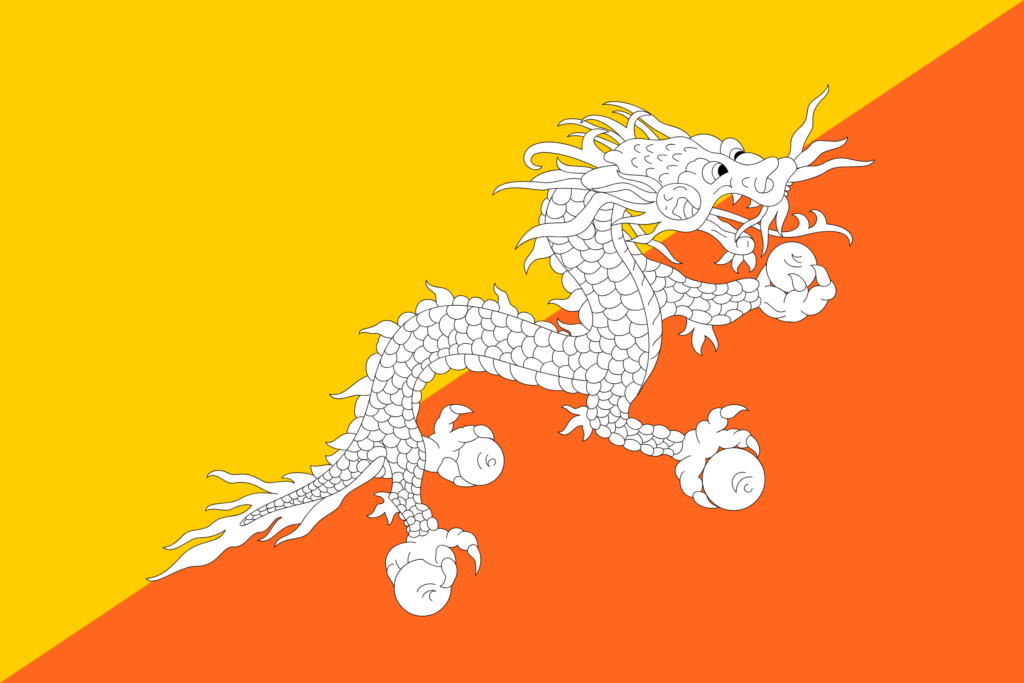
The flag of Bhutan features a dragon, which, like the lion in Sri Lanka’s flag, is a powerful national symbol. Both flags use strong, bold colors and symbols to represent their nations’ strength and culture.
The dragon in Bhutan’s flag and the lion in Sri Lanka’s flag are central figures, symbolizing the protection and integrity of their respective countries.
Wales
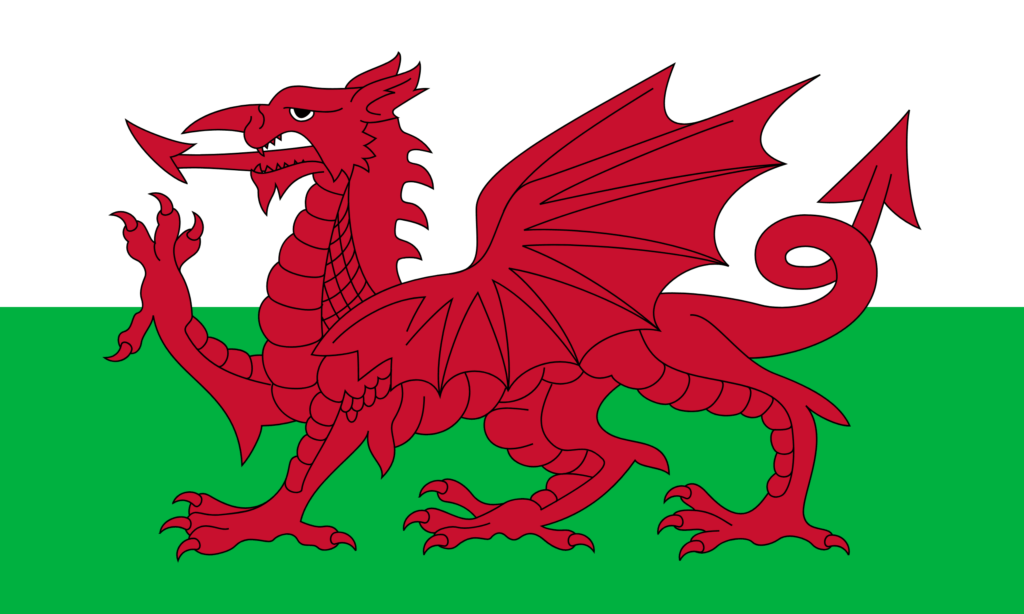
The flag of Wales, known for its iconic red dragon (Y Ddraig Goch) against a field of green and white, shares a symbolic connection with Sri Lanka’s flag through the use of a powerful, mythical creature as its central emblem.
While Sri Lanka’s flag features a lion holding a sword, representing strength and bravery, Wales’s dragon symbolizes the Welsh people’s fierce spirit and culture.
Spain
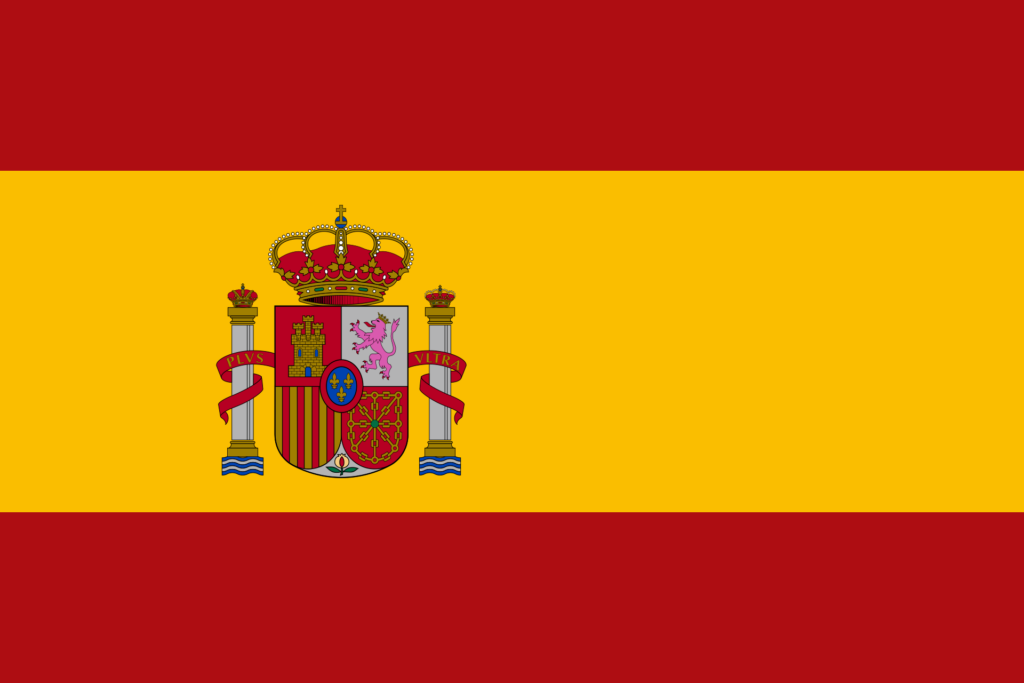
The flag of Spain doesn’t contain a lion but has a coat of arms that includes historical symbols, similar to the lion and the sword in the Sri Lankan flag.
The Spanish flag’s rich red and yellow colors might also visually echo the maroon and gold in the Sri Lankan flag, representing vitality and sovereignty.
Final Thoughts
The flag of Sri Lanka encapsulates a narrative of unity and heritage, weaving a story that resonates deeply with its citizens and distinguishes it within the international mosaic of flags. It is a vibrant reminder of the country’s commitment to peace, diversity, and a shared national identity.
Image Sources and Copyright Information
- Sri Lankan Flag in Front of Buildings: © Girts Ragelis/Shutterstock
- Sri Lankan Flag Pin on Map: © hyotographics/Shutterstock